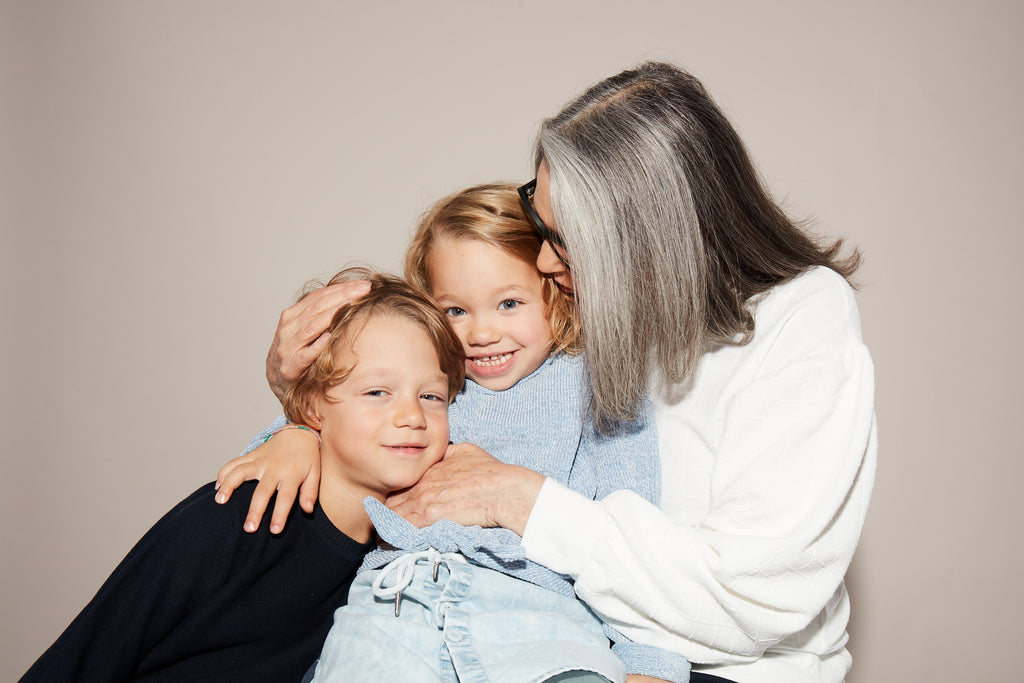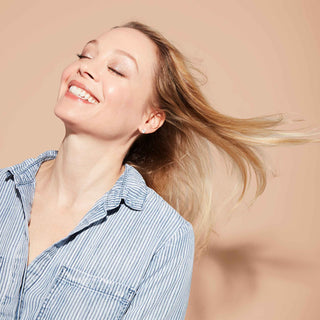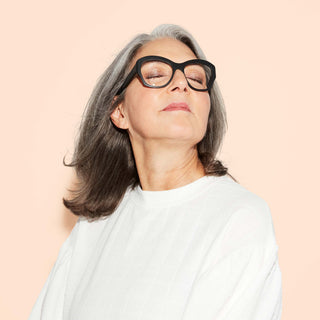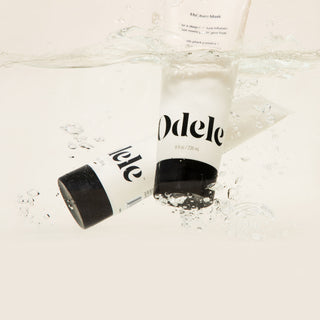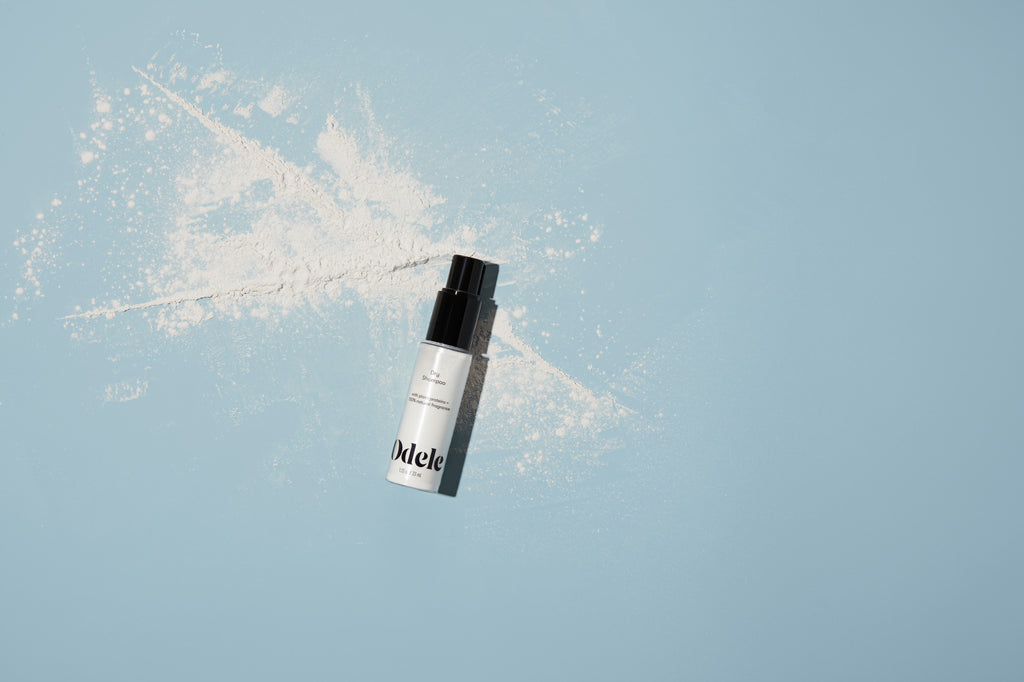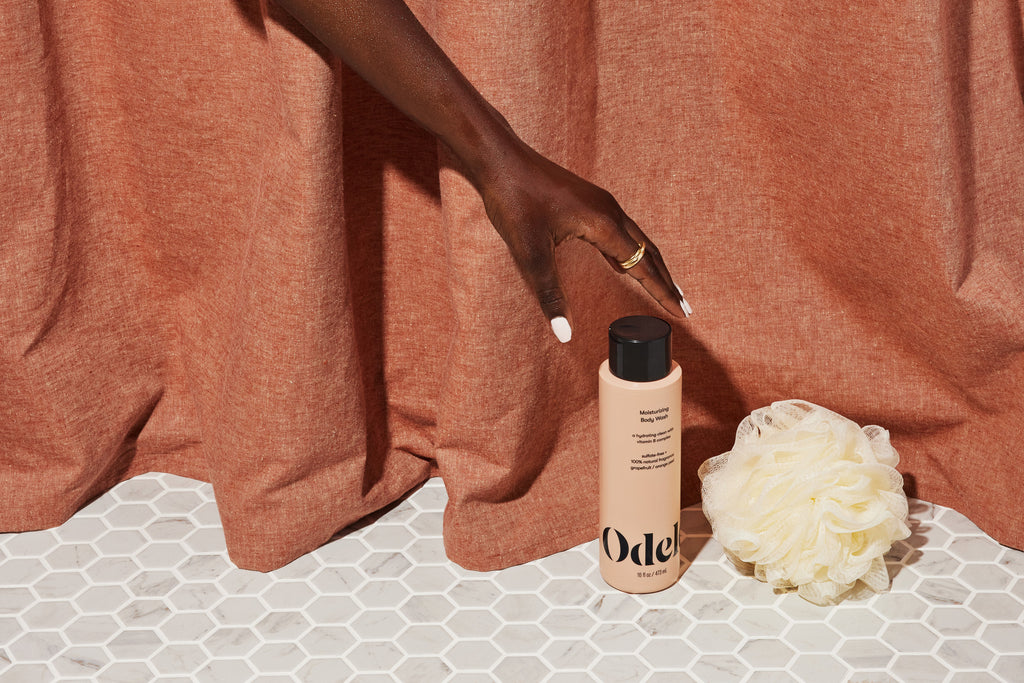Ch-ch-changes! Like everything else on your body, your hair is constantly going through them. As you get older, your mane transforms in a number of ways. And—surprise!—it doesn’t just start when you spot that first gray: the slow ‘n’ steady process of hair aging kicks off much earlier than you might think. These transitions are all part of the body’s natural aging process, but your lifestyle, genetics and hair care habits also affect how your mane matures.
Aging is something to celebrate, but we know changing your routine isn’t always easy. What your hair needs now might not be what it needed a few years ago or what it will need a few years from now. Let’s get into what to expect, why it happens and what you can do to better care for your hair.
How does your hair change as you get older?
Your hair is gradually changing throughout your lifetime, thanks to hormone fluctuation, genetics (big one) and everyday wear and tear. In fact, your locks start to “age” as early as puberty—slowly but surely transforming in appearance, texture and behavior over the years. While these changes will look different for everyone, most people experience some level of the following:
Hair loss and thinning
What to expect: Slowed growth and less volume. It’s totally normal to lose hair as you get older, but if you’re concerned about it, or if you experience sudden or excessive hair loss, consult your doctor.
Why it happens: Hair loss can happen at any age, but the likelihood of losing extra strands increases the older you get. As the body ages, the hair follicles (tiny organs in the top layer of skin that produce hair) shrink—and eventually disappear! Fewer follicles = less hair.
Hormones play a major role, too. Estrogen, progesterone and testosterone control the hair growth cycle. When one or more of these hormones gets thrown out of whack (be it due to stress, pregnancy, menopause or other bodily changes), it messes with the hair growth cycle, causing the hair follicles to slow down or stop making hair. This can look like a receding hairline, clumps of hair falling out postpartum or slowed hair growth during menopause.
Dryness
What to expect: Drier hair and scalp. Good news for greasy-haired friends and anyone who hates washing their hair: as those hyperactive oil glands start to mellow out, you’ll be able to go longer between shampoos. You also might need to add extra conditioning treatments to your routine.
Why it happens: The body produces sebum and other lipids that naturally condition the hair and skin. As lipid production slows down with age, the body loses its ability to retain moisture, leading to increased dryness.
Color changes
What to expect: Your hair color will get lighter—hello, glorious grays and whites!
Why it happens: Hair color comes from melanin, a pigment produced by cells called melanocytes that live in the hair follicles and skin. As you get older, your hair follicles produce less melanin. That loss of color leaves hair gray (and eventually white, when melanin production stops altogether).
When and to what extent this occurs is almost entirely up to your genes. So, if one or both of your parents started graying in their 20s, chances are you will, too. And yes, stress really can speed up grays: scientists recently discovered that high stress levels can lead to a permanent loss of melanocyte cells.
Texture changes
What to expect: Your strands may get straighter, curlier, frizzier and/or more fragile. No biggie—you’ll likely just need to switch up your hair care products.
Why it happens: Internally, it has a lot to do with melanin. This pigment not only gives hair color but also fortifies the hair and protects against the effects of sun exposure. As melanin production decreases with age, hair becomes weaker and more susceptible to damage and brittleness. Hormonal changes can also alter the shape of the follicle, giving your once-straight hair a bit of curl, or vice versa. (Isn’t the body fascinating?!)
And of course, how you treat your mane throughout the years also matters. External wear and tear from heat styling, chemical treatments, mechanical stress, etc., can lead to frizzier, more delicate strands for your future self.

How to take care of aging hair
Prioritize scalp care. Maintaining a healthy scalp microbiome is key—after all, that’s where your hair starts growing in the first place. Our Clarifying Shampoo is ideal for detoxing the scalp gently.
Wash less frequently, but moisturize regularly. Spread out wash days to avoid overdrying your hair, and make sure to use a leave-in conditioner or hair mask.
Use volumizing products. These can help restore fullness, movement and bounce to thinning strands.
Use repairing products. Look for restoring lipids and strengthening proteins that support hair’s structure, like those in our Moisture Repair regimen.
Maintain a healthy diet and lifestyle. Stay active, eat well and prioritize your mental health—your hair (and the rest of your body) will thank you.
Keep your doctor in the loop. Sometimes, hair loss or changes in color/texture may be the result of an underlying health issue, so make sure to consult a medical professional if something seems off.

